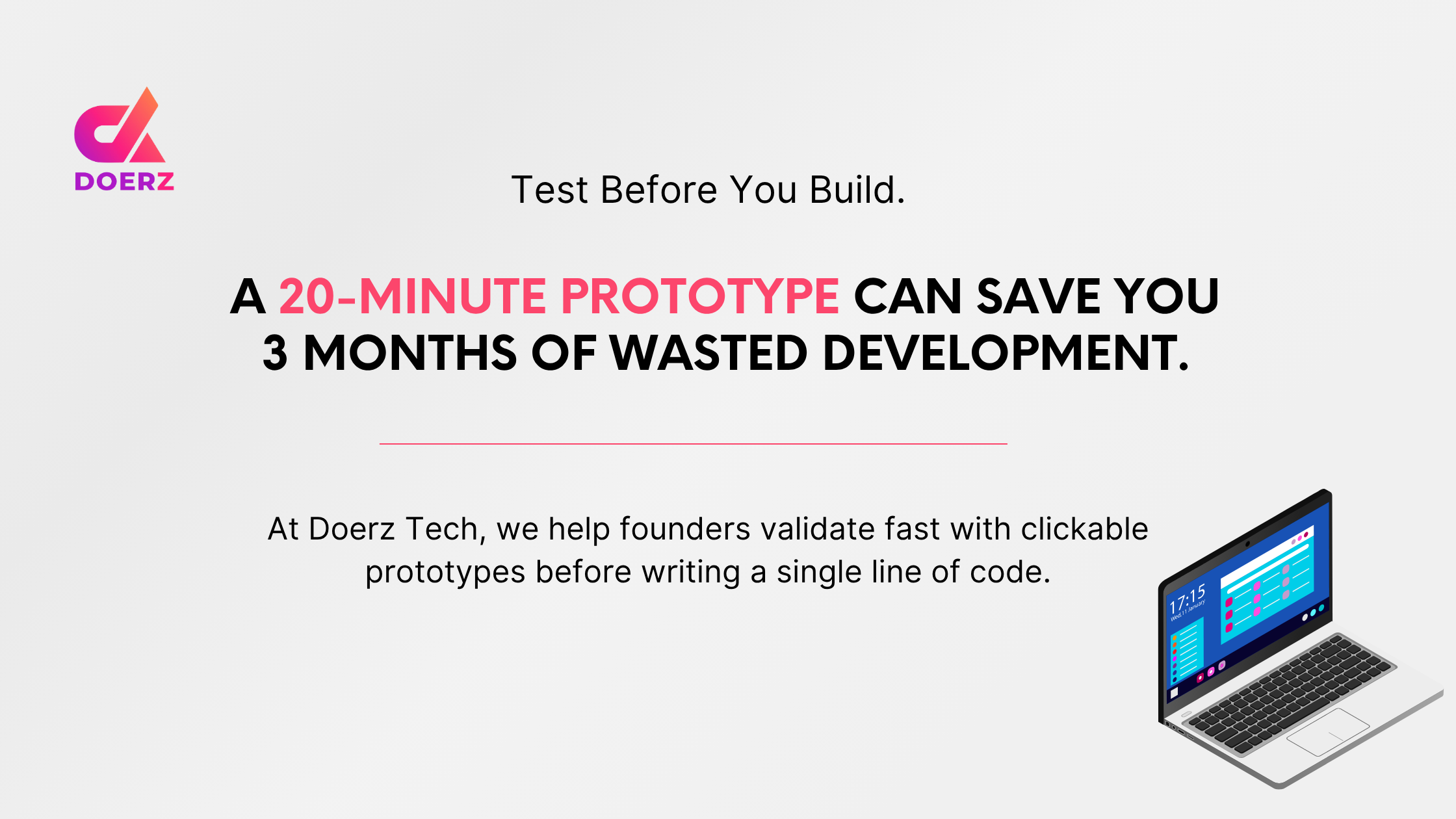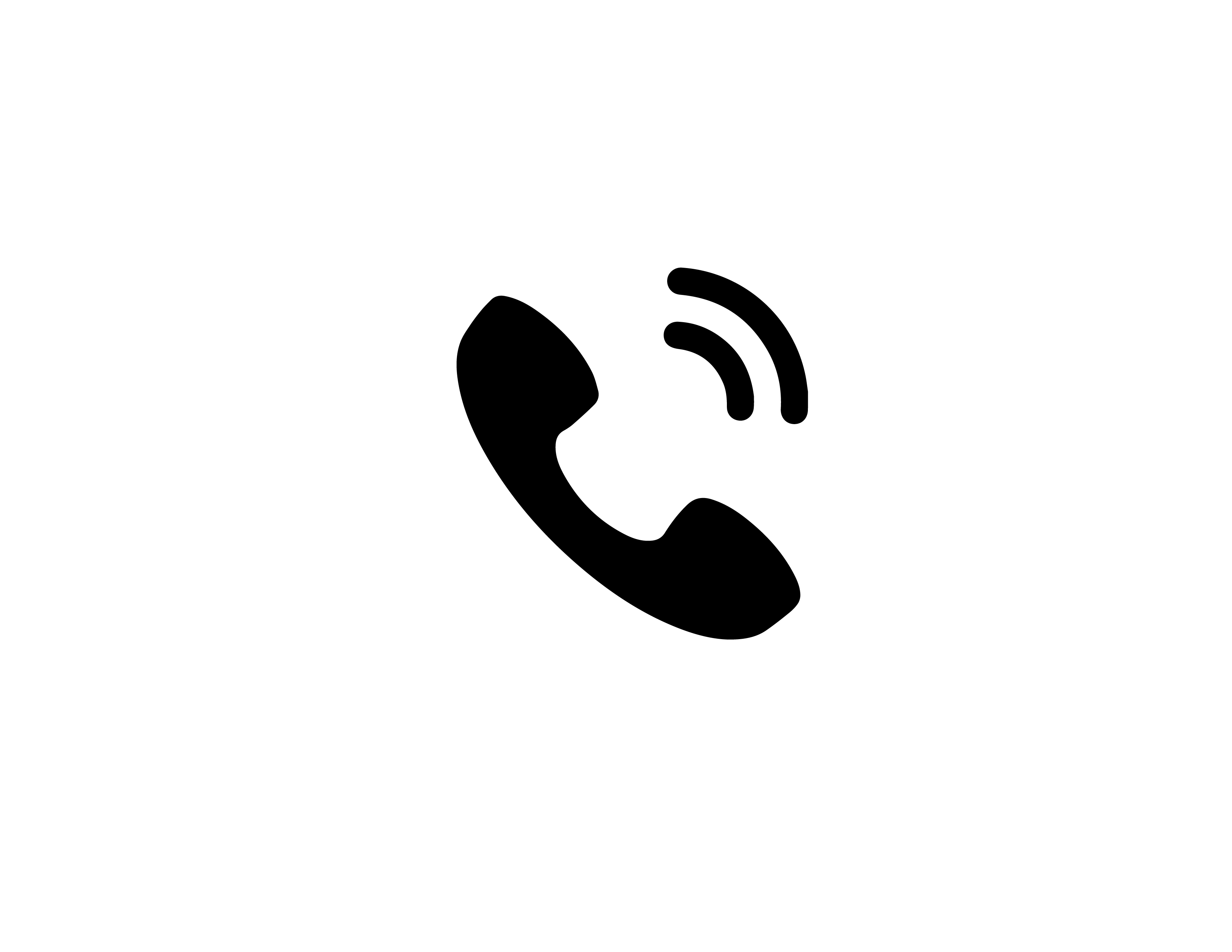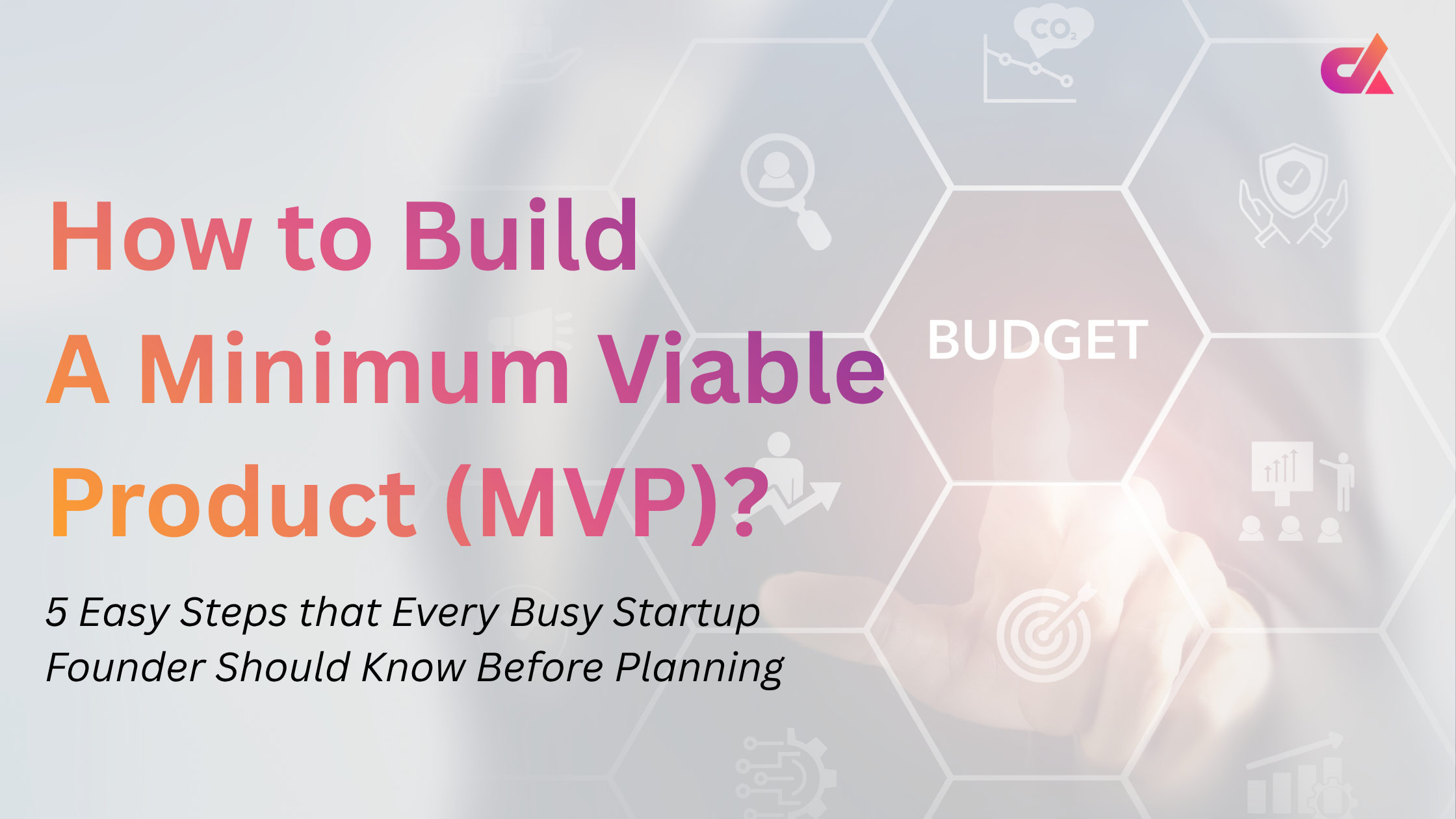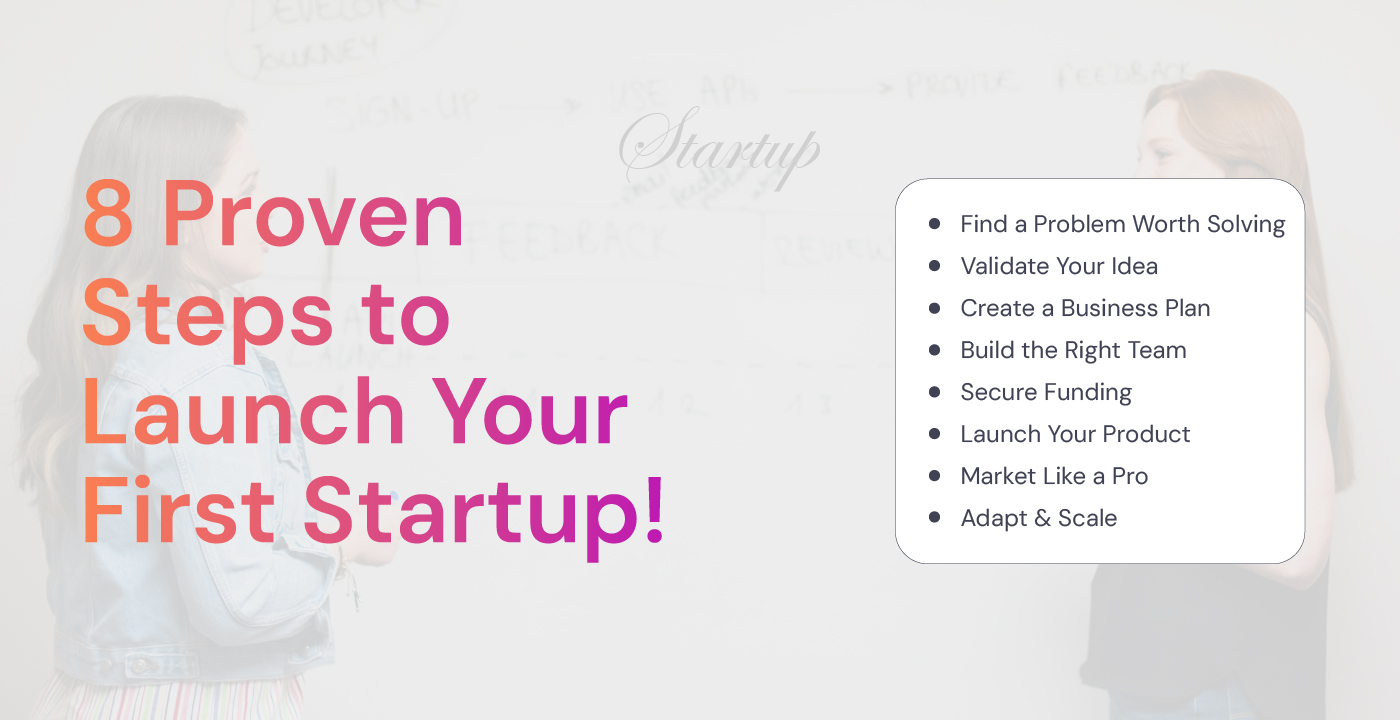You are sitting in your living room, maybe halfway through your coffee, when it hits you… that one idea that won’t leave your head. You open your notes app and type three words: “App for travelers” or “Platform for local artists”.
For a few days, that idea buzzes in your mind like static. You start dreaming in wireframes and imagine investors nodding in pitch meetings. You even sketch the logo.
And then reality hits: “Where do I even start?”
Most founders freeze here.
They have the spark but not the strategy. The truth is, every world-changing startup, from Airbnb to Dropbox, began with one thing: a Minimum Viable Product (MVP).
So, to build a minimum viable product (MVP) without draining your savings or sanity, this is your map. We are going to break down how to build an MVP in 5 ways that actually make sense.
Why are MVPs so important for First-Time Founders?
This is something most startup stories skip. The MVP is not about building less but building smarter.
An MVP (Minimum Viable Product) is your idea’s first working version. Not perfect, not polished, but alive. You test, learn, and prove value before going all in on full-scale development.
Take the story of Zappos, for example.
When Nick Swinmurn first dreamt up the idea of selling shoes online, he didn’t build an app, hire engineers, or code an e-commerce system. He simply went to local shoe stores, took pictures, and listed them on a basic website. When someone placed an order, he’d go buy the shoes himself and ship them.
That was his MVP.
It validated the simple but powerful idea that people would buy shoes online.
That tiny test turned into a billion-dollar company acquired by Amazon.
Now compare that to the reasons startups fail because they “build something nobody wants”, a stat from CB Insights that every founder should memorize.
Zappos did not fail because it tested demand before scaling development.
That’s the whole point of MVPs:
Learn fast, spend smart, and validate before you build.
If you are in those early stages and thinking about what comes before MVPs (the pre-seed grind, cost planning, and strategy) this pre-seed app development roadmap can help you set realistic foundations before you invest a single dollar in code.
The 5 Steps to Build a Minimum Viable Product (MVP)
Step 1: Start with the Problem, Not the Product
Before you sketch screens or hire developers, you need to understand the pain.
Who’s feeling it? How often? Why does it exist?
Startup founders fall into this exact trap of not understanding the pain points and these are actually real startup lessons from failed founders, basically a roadmap of what not to do.
When Olivia came up to us with her idea for a meal-planning app, she jumped straight into features: calorie counters, custom recipes, premium plans. But when she interviewed ten busy moms, she realized that nobody wanted complexity. They just wanted to stop thinking about dinner every night.
That shift changed everything.
Her MVP ended up being a simple WhatsApp bot that sent 3 dinner ideas a day. That’s it.
And it worked.
#1 Mistake to Avoid when you Build a Minimum Viable Product (MVP)
Don’t build a solution looking for a problem. Build around pain, not pride.
Because Harvard Business Review says, 75% of all startups fail, and this is the #1 step where it all boils down.

Step 2: Define the Must-Have Features
Once you know the problem, you will want to fix everything at once. Don’t.
Your MVP is not your dream product, it’s your proof of concept. Focus on just 2–3 core features that solve the main pain point.
Let’s say you are building a platform for freelancers. You might want chat, payments, reviews, dashboards, portfolios, matching algorithms. But your MVP just needs one clean workflow: connect client + freelancer + simple payment.
Basically, the right MVP feature sets can make or break your idea.
Less is not lazy, it’s strategic.
Pro Tip for Feature Selection
| Priority | Feature | Why It Matters |
| 1️ | Core Problem Solver | Your MVP must directly solve one key pain. |
| 2️ | User Flow Feature | Helps users complete the journey (e.g., signup, checkout). |
| 3️ | Feedback Loop | Lets you collect early input from real users. |
Step 3: Sketch, Prototype, Test: Fast
Speed is your best friend when you Build a Minimum Viable Product (MVP).
Forget perfection. You are building a test car, not a Tesla.
You can start with paper sketches or tools like Figma, Miro, or Adobe XD, just enough for users to click around and react. The goal should be to validate flow and usability before writing code.
A founder we once met built a Figma prototype for her “pet social app.” Within a week, she had 25 users testing it. Most said the “profile for pets” feature was fun, but unnecessary. That feedback saved her three months of coding… and $5,000.
To understand structuring your MVP from a technical perspective, app architecture best practices show how early architectural choices affect scalability later.
Design/Productivity Tools You Can Try Today
- Figma (for design mockups)
- Maze (for user testing)
- Notion or Miro (for organizing feedback)

Step 4: Build, Launch, and Listen
Now comes the leap… taking your validated prototype and turning it into something real.
Many founders get stuck here. They think launching means perfection.
In reality, launching your MVP means testing in the wild.
Deploy it. Share it with 20 real users. Ask questions. Track behavior.
Remember, data > assumptions.
Metrics to Track After Your MVP Launch
- Signups vs. active users
- Feature usage frequency
- Drop-off points in user flow
- Feedback themes from users
It is all about learning what to do next.
Step 5: Measure, Iterate, and Grow
Your MVP is the starting line, not a destination.
Once you have launched, you will start seeing what is actually important in all your journey:
Who’s returning? What are they skipping? What are they begging you to add?
That’s the gold.
One founder told us his users “loved” his home-cleaning app. But the analytics showed most users stopped right before booking. The reason was there was no “confirm booking” button on the homepage. It was buried inside the profile. A 10-minute fix doubled his conversions.
How to Know You are Ready for Version 2
- You have consistent user feedback
- You have validated 1–2 paid features
- You are seeing retention over 30%
Once that happens, that’s your green light to grow.
If you are curious about what comes after MVP (growth, funding, and founder mindset) our founder’s guide to startups covers how to evolve from MVP to market-ready business.
4 Types of MVPs You Can Build
This is the beauty of today’s startup world. You don’t need a full tech team or a million-dollar budget to test your idea.
You just need the right kind of MVP.
Here are a few types of MVPs first-time founders can use:
1. The No-Code MVP
Perfect if you are not technical.
Use tools like Bubble, Glide, or Softr to build a working version of your app without a single line of code.
A founder we met launched a home-maintenance app using Glide. It looked like a real app, worked like a real app, and got 300 testers in a week.
Cost was less than a weekend trip.
2. The Landing Page MVP
This is the “smoke test.”
You don’t build the product at all. You just create a simple website explaining what it would do.
Add a “Join the Waitlist” or “Get Early Access” button.
If people actually sign up, BOOM. Validation achieved.
3. The Wizard of Oz MVP
From the outside, it looks like a fancy, automated app.
Behind the scenes? It’s all you.
For example, if you are testing an AI resume-builder, you could have users upload their resume, then you (the founder) manually improve it before sending it back.
Users get the experience, and you get priceless feedback without writing complex algorithms.
4. The Concierge MVP
This one is as personal as it gets.
Instead of building an app, you offer the service manually to a few people.
A founder we worked with wanted to build a nutrition AI coach, so she started by personally texting 10 users daily with meal advice.
After two weeks, she had real data on what people actually wanted before she built anything digital.
Doerz Tech’s MVP Development Process: Build a Minimum Viable Product (MVP) with Ease
At Doerz Tech, we step in as your co-pilot and partners who help shape your idea from sketch to launch.
Over the years, we have guided dozens of founders through the MVP maze.
Our approach to minimum viable product development blends product strategy, user testing, and lean engineering… all designed to help founders build a minimum viable product (MVP) that works in the real world.
That’s because… every great startup begins with a small and smart first step.
And if you are still mapping out your early founder journey, our startup checklist for first-time founders ties everything together, from validation to MVP to scale.









